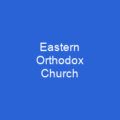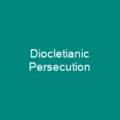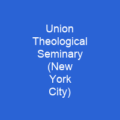Christianity: The World’s Largest Monotheistic Faith
Christianity, an Abrahamic monotheistic religion professing Jesus Christ’s resurrection and divinity, boasts over 2.4 billion followers worldwide, comprising around 31.2% of the global population. This vast number speaks to its profound impact on human history and culture. But how did this faith come into being? And what has shaped its evolution over centuries?
The Birth and Early Spread of Christianity
Imagine a small Jewish sect in the 1st century AD, with Hellenistic influences, slowly growing into a global phenomenon. This is how Christianity began. It started as a movement within Judaism but soon separated to become an independent religion. The persecution faced by early Christians, including Paul’s initial opposition before his conversion, played a crucial role in its spread and development.
Theological Foundations and Early Authors
Early bishops like Ignatius, Polycarp, and Justin Martyr produced theological works during the Ante-Nicene period. Their writings laid the groundwork for Christian doctrine. The Edict of Milan in 313 AD marked a significant turning point, ending Roman persecution and establishing Christianity as the state religion under Emperor Constantine I. This led to the formation of various branches such as Eastern Orthodox, Catholic, Protestant, Oriental Orthodoxy, Restorationism, and the Church of the East.
Key Figures in Early Christianity
Ancient Africa played a pivotal role in early Christian development with figures like Tertullian, Clement, Origen, Cyprian, Athanasius, and Augustine. Their contributions shaped the faith’s theological landscape.
Theological Debates and Councils
From Gnostic Christianity to heterodox sects, early Christian history was marked by theological debates and councils that defined its core beliefs. The First Council of Nicaea in 325 addressed Arianism and formulated the Nicene Creed. This creed remains a cornerstone of Christian doctrine today, emphasizing key beliefs such as the Trinity and Christ’s divinity.
The Rise of Islam and Its Impact
By the 7th century, the rise of Islam significantly impacted Christianity, reducing its presence in North Africa and parts of Asia. However, pockets like the Coptic Church in Egypt, Ethiopian Orthodox Tewahedo Church, and Nubian Church remained resilient.
The Middle Ages: A Time of Transformation
During the Middle Ages, Christianity underwent significant changes with the papacy becoming a political player. The church’s missionary activities expanded across Europe, leading to the establishment of universities and the rise of mendicant orders like the Franciscans and Dominicans.
The Crusades: A Complex Chapter
The Crusades, initiated in 1095 by Pope Urban II, aimed to reclaim Jerusalem from Muslim rule. While they failed to achieve their primary goal, they contributed to Christian enmity towards Islam and led to significant religious conflicts.
Reformation and Its Aftermath
The Protestant Reformation, sparked by Martin Luther’s Ninety-Five Theses in 1517, led to the creation of various Protestant denominations. This schism between Catholic and Eastern Orthodox churches continues to shape Christian identity today.
Modern Developments: Global Growth and Decline
While Christianity faces challenges in Europe, it is growing rapidly in Africa and Asia. The rise of non-trinitarian movements and the increasing influence of evangelical Protestantism highlight the dynamic nature of this faith.
Theological Doctrines: Core Beliefs and Creeds
Central to Christianity are beliefs in the Trinity, Jesus as the Son of God, and the Holy Spirit. The Nicene Creed, formulated in 325 AD, encapsulates these core doctrines.
Liturgical Practices: Worship and Sacraments
Christian worship varies widely but typically includes elements like baptism, Eucharist, prayer, confession, and marriage rites. The Eucharist, or Communion, is a central sacrament symbolizing Christ’s sacrifice.
Biblical Interpretation: From Literal to Symbolic
Views on biblical interpretation vary among denominations. Protestants emphasize sola scriptura (Scripture as the sole authority), while Catholics and Eastern Orthodox churches incorporate tradition and reason alongside Scripture.
Theological Diversity: Denominational Splitting
Christianity is divided into numerous denominations, each with its own unique beliefs and practices. From Catholicism to Protestantism, Oriental Orthodoxy, and Restorationist movements, diversity defines this faith’s landscape.
Persecution and Apologetics: Challenges and Defenses
Despite its global presence, Christianity faces persecution in many parts of the world. Christian apologetics seeks to defend the faith through rational arguments and theological discourse.
The Future of Christendom
As we look towards the future, the challenges faced by Christianity are clear. Yet, its enduring influence on Western civilization and its global spread continue to make it a force to be reckoned with in the 21st century.
The journey of Christianity is one of transformation, resilience, and evolution. From its humble beginnings as a small Jewish sect to becoming the world’s largest religion, Christianity has left an indelible mark on human history. Its core beliefs, liturgical practices, and theological diversity continue to shape the lives of billions around the globe.
You want to know more about Christianity?
This page is based on the article Christianity published in Wikipedia (retrieved on November 25, 2024) and was automatically summarized using artificial intelligence.







